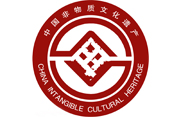Intangible Cultural Heritage Park to Reveal Key Collection Highlights
Intangible Cultural Heritage Park, which is located in 2nd Section, Guanghua Road, Qingyang district in Chengdu city is open to guests during the 3rd International Intangible Cultural Heritage Festival in Chengdu, from May 29 to June 11.
A variety of exhibitions and performances about intangible cultural heritage will be held in the major venue of The Third International Festival of Intangible Cultural Heritage, Intangible Cultural Heritage Park.
Chengdu Pavilion: Masters will make Shu Brocade on site
Intangible Cultural Heritage Park covers a land area of about 101 acres and a construction area of about 336,000 square meters. The first phase of the park is composed of five parts; they are Wuzhou Center, Drama Play, Century Dance, Story of Western City and Space-time Tour.
Chengdu Pavilion, located in the east of Intangible Cultural Heritage Park will be used to display Chinese traditional handcrafts and artistic works. The multi-purpose center in Chengdu Pavilion is the most attractive; in the next few days, traditional dances, folk performances and large dance shows will be staged there. In addition, trendy brand parties and fashion shows will be organized from time to time. The center is the perfect place for holding various celebrations, annual conferences, new product launches and arts activities.
The newly decorated pavilion is still covered with plastic sheeting and wood panels. Reporters found nothing but a tall, delicate wooden machine. Staff member Mr. Gong the machine is used for weaving Shu Brocade. After the International Festival of Intangible Cultural Heritage opens on May 29, there will be two masters using the machine to make Shu Brocade everyday. In 2006, “Shu Brocade Weaving Techniques” was ranked as one of the first batch of China Intangible Cultural Heritage by the State Council; it was also added by the United Nations Educational Scientific and Cultural Organization to its candidate list for Intangible World Heritages. On June 5, 2007, Ye Yongzhou and Liu Chenxi were identified as the representatives of “Shu Brocade Weaving Techniques” by the State Ministry of Culture; they were also identified as the first batch of intangible cultural heritage items representatives.
Key highlights of the collections: Hua lou Loom for Ancient Shu Brocade in Qing Dynasty (1644-1912)
Shu Brocade originated in the Warring States Period (475-221BC) and has a history of more than 2,000 years. Shu Brocade, together with Nanjing Yun Brocade, Gusngxi Zhuang Brocade and Suzhou Song Brocade was viewed as one of the “Chinese top four brocades” because of its long history and unique craft. In Han Dynasty (206BC-220), Chengdu Shu Brocade had already been highly developed so Chengdu was treated as “the city of brocade”. Moreover, the Jinjiang River surrounding Chengdu city was also famous because many people washed the brocade in the river.
Hua lou Loom is the major machine for Shu Brocade making. It was a typical Chinese tool as well as a living fossil for the development of silk technology. Hua lou Loom is six meters long, 1.5 meters wide and five meters high with thousands of components. Two workers work together to operate the machine and make wonderful patterns.
Mr. Gong said the Hua lou Loom at the Chengdu Pavilion was donated by the Chengdu Shu Brocade Museum.
Nanjing Yun Brocade with dragon patterns: made by gold
Next to the Hua lou Loom, there are many classic brocade artworks hanging on the wall. Among them, the Nanjing Yun Brocade with dragon patterns is worth at least 10,000RMB ($1,500). This precious artwork was brought by the host from Nanjing for this exhibition.
Yun Brocade in Nangjing city is the eminent representative in the history of ancient Chinese craftworks. The craft of Yun Brocade requires high-level hand stitching that cannot be replaced by machines; the weaving techniques are so complicated Yun Brocade has been called several things, including "An inch of gold for an inch of brocade", "Oriental Jewel" and "Wonder of China". Yun Brocade was used exclusively by the imperial houses or as gifts bestowed by the emperors on princes or senior officials. It’s famous for its beautiful and delicate vein-like colorful cloud. Yun Brocade weaving technique is one of the most precious intangible cultural heritages of China and in the world. In 2009, the Nangjing Yun Brocade was added by the United Nations Educational Scientific and Cultural Organization to the list for Intangible World Heritages.
Translated by Jiang Yilingzi





